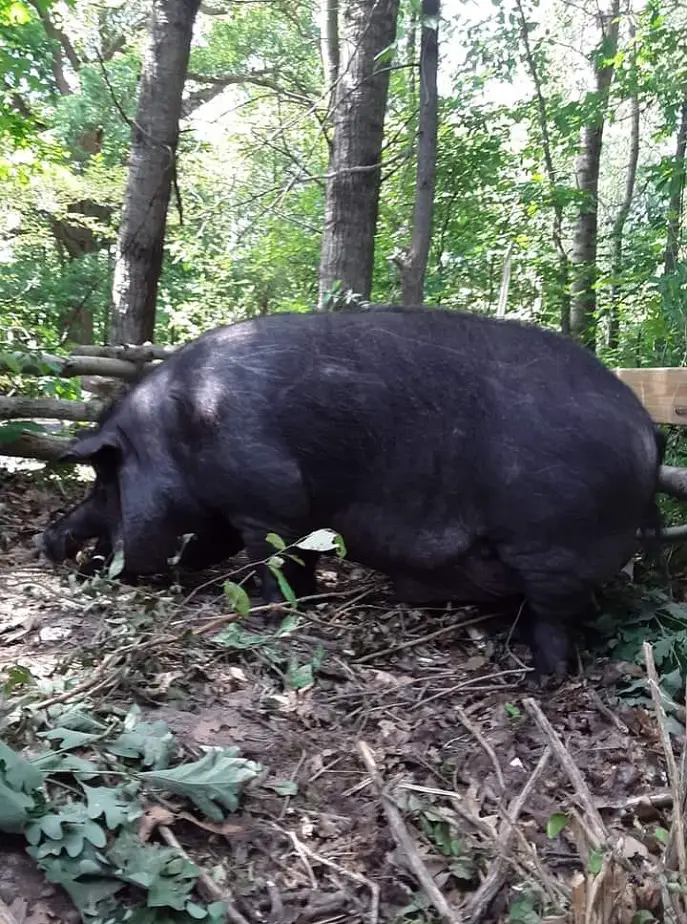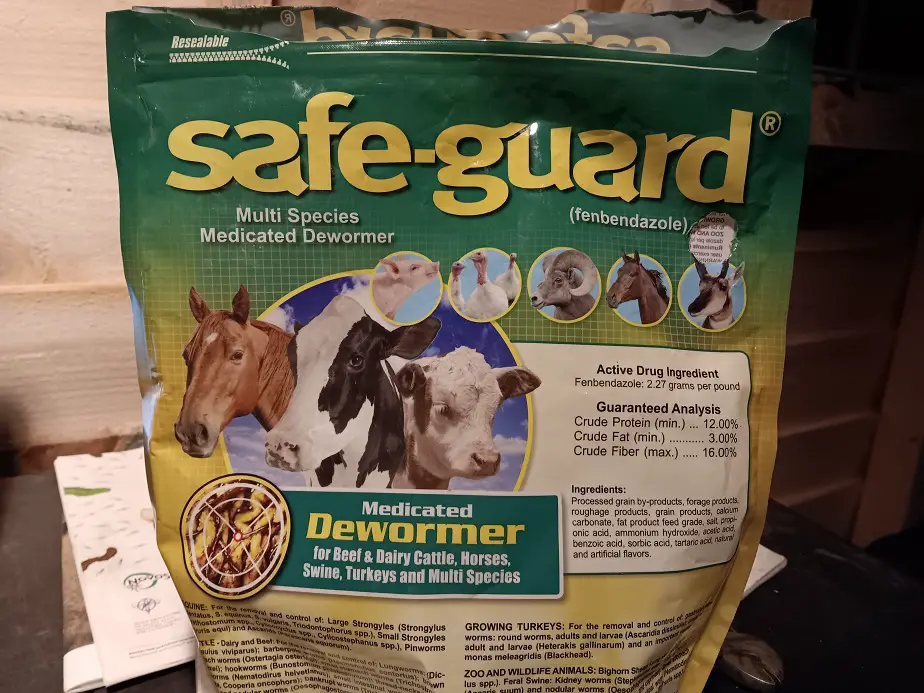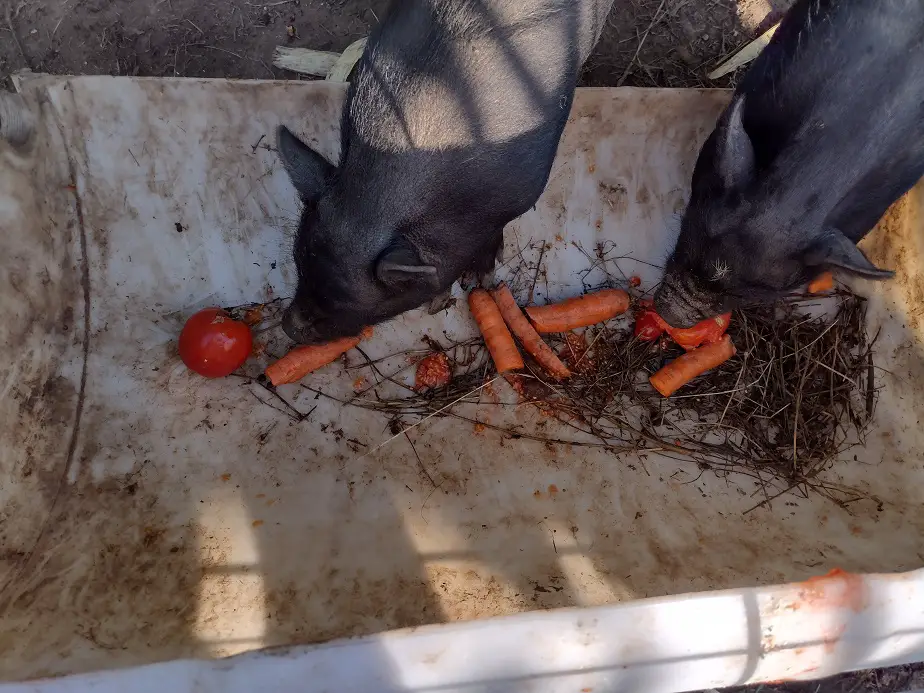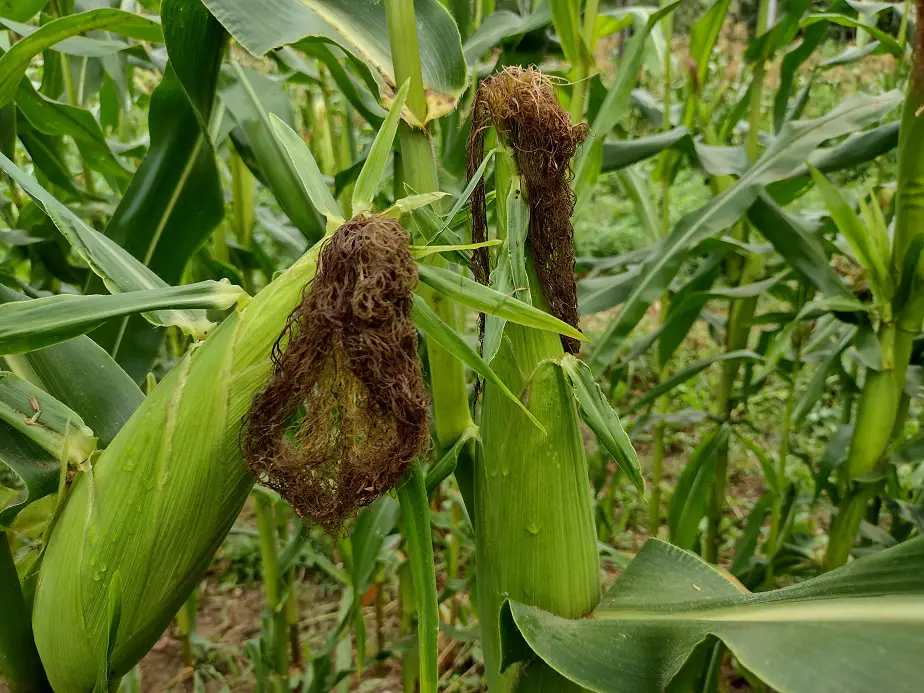I’ve finished pigs on corn and other grains. There have been some interesting results.
Finishing pigs on corn can be a good way to add fat to a pig, making the meat more tender and tasteful. It’s a cheap method, but it doesn’t always have a good impact. Finishing on corn is a great way to boost the calories in feed before butchering, but it’s not always needed.
There are times when finishing on corn is useful and times when it isn’t.
Is it good to finish a Pig On Corn?
In times past, pigs were raised in a pasture, or even roaming wild, then before butcher time fed a grain diet to plump them up. Corn being the most productive grain, was the most common choice. Corn Finished pork was superior to wild or pastured pork because to had more fat.
200 years ago, the fat on a pig was worth more than the meat, so fattening them up was a pretty big deal. These days fat pork is considered undesirable unless it’s a heritage breed (they have better marbling). So, to recap, corn was and still is used to fatten pigs that had a leaner, pasture-type diet to start with.
In closer to modern times, it was common to keep a pig or two and feed them mainly kitchen scraps and garden waste, then buy a few bags of corn to “finish them out” before butchering. Basically, as pigs grow and you no longer have enough scraps to feed them, give them a little corn too.

You can still do that today. In fact, We’ve done just that. Fed pigs on mostly scraps, then give them a scoop of corn every day for a month or two so they finish nicely, or at least better. It’s kind of a poor (not much money) way to do things. I’ve been there.
We are currently raising 9 pigs to butcher, so scraps won’t do it anymore. Will I finish them on corn this time? Maybe. It depends on if they look too lean to me next month. If I want them to gain more fat, I’ll feed them an extra helping of soaked or lightly fermented grains for a month or more.
You can fatten a pig a little in a month and a bit more in two months. It’s definitely noticeable. This year, my wife wants lard and some of my customers requested fatty pigs for the rich in omega-3 fatty acids in pork lard. So, we’re aiming for pigs a bit fatter than usual.
I’d rather fatten them up slowly over time, but will pump them up at the end if need be. Grain is energy in a starchy form that turns into fat more efficiently than many other energy sources. Corn is still the cheapest grain available in the US, so I may finish them on corn.
Now, I would hesitate to feed them only corn, especially if they haven’t been having any. At the minimum, ease them into it so their digestion can handle it better. Also, realize that a formulated pig feed is 60% to 80% corn already.

One thing you need for pigs, no matter your raising system, is a parasitic worm treatment. The best swine dewormer is Fenbendazole. It’s known by the brand name Safeguard. Safeguard is available as a medicated corn/alfalfa pellet. It’s the only way I can worm my pigs since they won’t stand still for an injection of Ivermectin. It’s easy and cheap.
- There is a stronger pellet for swine only. Here it is on Amazon
- There is a weaker pellet for general barnyard livestock, including swine. Here it is on Amazon.
I use the multi-species version because it’s what’s available in my local store and I can use it for my chickens too. It’s the most effective swine wormer and the easiest to administer. I use it on all weaned piglets and adults twice a year. Don’t go without it.
If you’re feeding regular pig feed, switching to a low-protein feed (12% or so), would do. That is usually 80% or more corn. But, if you also want to go with the cheaper option, well corn is cheaper. Just know that dry corn, unless its ground finely, only digests at an 80 to 90% efficiency.
If you soak it in water overnight, it digests better, giving pigs more calories and nutrition from it. Our pigs get mainly fermented grains (corn and oat). Fermenting grains decreases the calories but increases the protein. To fatten my pigs at the end, I’d switch to soaked grain instead of fermented.
I wrote an entire article on fermenting grains for pigs. Here’s a link to it.

We’ve played around with pasture-raised pigs. Pigs fed a mostly wild diet grow slow and lean. Those ones will benefit the most from corn finishing or finishing on any other grain. Corn isn’t going to cause much gain of muscle, because it’s low in the amino acids pigs need to make muscle, unless fermented.
But it sure can and does make some tasty fat. Now, corn makes a firmer fat, with more saturated fats in the lard. Other grains tend to make a softer fat. I feed mostly oats because I get them cheap. That makes my pig have softer fat. Softer fat cooks out easier, which makes the porkchop a bit easier to overcook.
Corn is a fat-hardening grain. I think barley is as well, but to a slightly lesser degree. Corn-fed pork fat was originally considered the most desirable. These days, it’s all most folks ever get since pig feed is mainly corn.
As far as corn goes, I prefer to feed cracked corn vs whole corn. I pay the same price for it from the farmer either way. Cracked corn soaks up water quicker, ferments faster, and digests a little bit more completely than whole corn. The difference in digestion appears to be small, as in less than 5% loss in efficiency.
If whole corn is more than 5% cheaper than cracked corn, it’s a fine option. It’s always better to either soak it overnight or ferment it (soaking at room temperature for 3 days), before feeding and un-ground grains to a pig. Cracked or rolled grains are not ground.

If you’ve been feeding pigs without grain, one bag of corn fed in the last month will make a difference. One old standard was to buy 200 pounds of corn and feed it a pound a day for 6 and a half months, starting when the pig was weaned.
That’s figuring the pig either has a good amount of kitchen scraps or ample pasture to forage around. Another method is to feed a 5-month-old pig 6 pounds of corn a day for a month, to fatten it up. That’s the dry weight. It’s heavier after soaking. I’d ease a pig into a diet like that over a week’s time to avoid digestive issues.
All this to say, there are a lot of options out there beyond buying standard pig feed. Create a system that works for you. It doesn’t have to look like my system, or some other guys. If you arm yourself with good information, you can make informed decisions for your own farm or homestead.
If you have any questions, feel free to ask in the comment section below.
Related Articles:
- Raising Pigs Cheap (pork at 1/5 cost)
- Heritage Hog Sizes and Butcher Weights
- How We Feed Pigs at Half-Cost (and they do great)
- How Much Space for 1 Pig?
- Can Pigs Live on Just Corn?


Hello, you used to write magnificent, but the last few posts have been kinda boring… I miss your tremendous writings. Past few posts are just a bit out of track! come on!